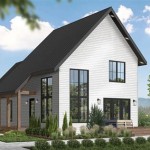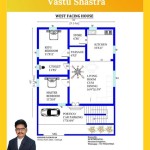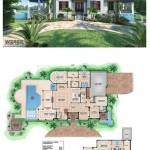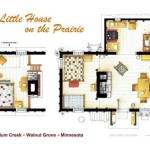House Plans On Pilings With Elevator: Accessibility and Coastal Living
Building a home on pilings offers distinct advantages, particularly in coastal environments or areas prone to flooding. Elevating the structure protects against water damage, provides better views, and can even reduce insurance premiums. Adding an elevator to a house plan on pilings introduces a significant element of accessibility, catering to a wider range of homeowners and potentially increasing the property's long-term value. This combination addresses both environmental concerns and evolving lifestyle needs.
The integration of an elevator into a house plan on pilings requires careful consideration of structural integrity, spatial planning, and code compliance. It is not simply an add-on; it's an integral part of the overall design that impacts the home's functionality and aesthetic appeal. Collaboration between architects, structural engineers, and elevator specialists is paramount to ensure a safe, efficient, and aesthetically pleasing outcome. The decision to incorporate an elevator should be made early in the planning process to allow for seamless integration and avoid costly modifications later on.
Several factors contribute to the growing popularity of house plans on pilings with elevators. The aging population desires more accessible housing options that allow them to comfortably age in place. Families with members who have mobility limitations benefit significantly from the convenience and independence an elevator provides. Beyond accessibility, an elevator can also serve as a practical aid for carrying groceries, luggage, or other heavy items between floors, improving the overall convenience of daily living.
Key Point 1: Advantages of Pilings in House Construction
The primary advantage of building on pilings is flood protection. By elevating the living space above the anticipated flood level, pilings mitigate the risk of water damage to the home's structure and contents. This is particularly crucial in coastal areas susceptible to rising sea levels and storm surges. The elevated design also allows floodwaters to flow freely underneath the house, reducing hydrostatic pressure on the foundation and minimizing the potential for structural damage.
Beyond flood protection, pilings can also improve ventilation under the house, helping to prevent moisture buildup and reduce the risk of mold and mildew growth. This can lead to a healthier indoor environment and lower maintenance costs over time. The elevated structure also offers better protection from pests, as it makes it more difficult for rodents and insects to access the living space.
From a design perspective, pilings can create opportunities for unique architectural features and enhanced views. The elevated vantage point provides panoramic vistas of the surrounding landscape, which can be particularly appealing in coastal or scenic areas. The space beneath the house can also be utilized for parking, storage, or even recreational areas, maximizing the use of the property.
The construction process for houses on pilings typically involves driving timber, steel, or concrete pilings deep into the ground to provide a stable foundation. The pilings are then connected by a network of beams and joists to support the weight of the house. The elevation of the structure is determined by local building codes and flood regulations, which are designed to minimize flood risks and protect property owners. It is important to consult with experienced engineers and contractors who specialize in piling construction to ensure a safe and durable foundation.
Key Point 2: Integrating an Elevator into the Design
Adding an elevator to a house plan on pilings requires careful planning and coordination between the architect, structural engineer, and elevator contractor. The elevator shaft must be structurally sound and properly integrated into the overall design of the house. The location of the elevator should be convenient and accessible from all floors of the house, and it should comply with all applicable building codes and accessibility standards.
There are several types of elevators that can be used in residential construction, including hydraulic elevators, traction elevators, and pneumatic elevators. Hydraulic elevators are typically less expensive and require less space, but they may be slower and less energy-efficient than traction elevators. Traction elevators are faster and more energy-efficient, but they require a larger overhead space and a dedicated machine room. Pneumatic elevators are a newer technology that uses air pressure to lift and lower the cab. They are relatively compact and easy to install, but they may be more expensive than other types of elevators.
The size of the elevator cab should be chosen based on the needs of the homeowners. A standard residential elevator cab typically accommodates two to three people, but larger cabs are available for those who require more space. The cab should also be equipped with safety features such as emergency lighting, an alarm system, and a phone.
Accessibility is a key consideration when designing an elevator for a house on pilings. The elevator should be easily accessible from all entrances to the house, including the ground-level entrance and any raised decks or porches. The elevator cab should be large enough to accommodate wheelchairs and other mobility devices, and the controls should be easy to reach and operate. The elevator should also be equipped with audible and visual cues to assist people with disabilities.
Key Point 3: Considerations for Coastal Homes with Elevators
Coastal environments present unique challenges for house construction, including exposure to saltwater, high winds, and extreme weather. These challenges must be taken into account when designing a house on pilings with an elevator. The materials used in the construction of the house and the elevator should be resistant to corrosion and damage from saltwater and wind. The elevator shaft should be properly sealed to prevent water intrusion, and the elevator equipment should be protected from the elements.
Saltwater can accelerate the corrosion of metal components, so it is important to use corrosion-resistant materials such as stainless steel or aluminum in the construction of the elevator and its associated equipment. The elevator shaft should also be properly ventilated to prevent the buildup of moisture, which can contribute to corrosion. Regular maintenance and inspections are essential to ensure that the elevator is functioning properly and that any signs of corrosion are addressed promptly.
High winds can also pose a threat to houses on pilings, so it is important to design the house to withstand the anticipated wind loads. The pilings should be properly sized and spaced to provide adequate support for the house, and the connections between the pilings and the house should be strong and durable. The elevator shaft should also be designed to withstand high winds, and the elevator equipment should be properly secured to prevent damage.
Extreme weather events, such as hurricanes and tropical storms, can bring heavy rain, strong winds, and storm surges. It is important to design the house on pilings with an elevator to withstand these events. The house should be elevated above the anticipated flood level, and the elevator shaft should be properly sealed to prevent water intrusion. The elevator equipment should also be protected from flooding, and backup power should be provided to ensure that the elevator can continue to operate during a power outage.
Furthermore, compliance with local building codes and regulations is crucial for houses built on pilings, particularly those incorporating an elevator. These codes often dictate specific requirements for the elevation of the structure, the design of the foundation, and the safety features of the elevator. Failure to comply with these regulations can result in costly delays and fines.
The addition of an elevator also impacts the home's energy efficiency. Insulating the elevator shaft and using energy-efficient elevator equipment can help to minimize energy consumption. Consider using LED lighting in the elevator cab and installing a regenerative drive system that captures and reuses energy during braking. These measures can help to reduce the environmental impact of the elevator and lower energy bills.
Finally, aesthetics play a vital role in the overall design of a house on pilings with an elevator. The elevator shaft can be integrated seamlessly into the architecture of the house, creating a visually appealing and functional feature. Consider using glass panels to create a sense of openness and light, or incorporating decorative elements that complement the style of the house. The elevator cab can also be customized with a variety of finishes and materials to create a luxurious and inviting space.

Coastal Stilt House Plan With Elevator And Second Level Living Space 765044twn Architectural Designs Plans

Shelter Cottage Piling Foundation With Elevator 2466 Sf Southern Cottages

Porches Cottage Piling Foundation Side Entrance Garage Elevator 2395 Sf Southern Cottages

Plan 765042twn 3 Bed Country Cottage House On Pilings With Elevator In 2024 Plans Beach Floor Coastal

Plan 44199td 5 Bed Beach House On Pilings With Elevator And Two Laundry Rooms In 2024 Style Plans

Elevated Piling And Stilt House Plans Coastal From Home

Shelter Cottage Piling Foundation With Elevator 2466 Sf Southern Cottages

Elevated Piling And Stilt House Plans Coastal From Home

Coastal House Plans Beach From Sdc

Coastal Stilt House Plan With Elevator And Second Level Living Space 765044twn Architectural Designs Plans








